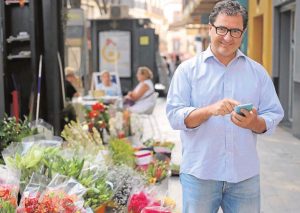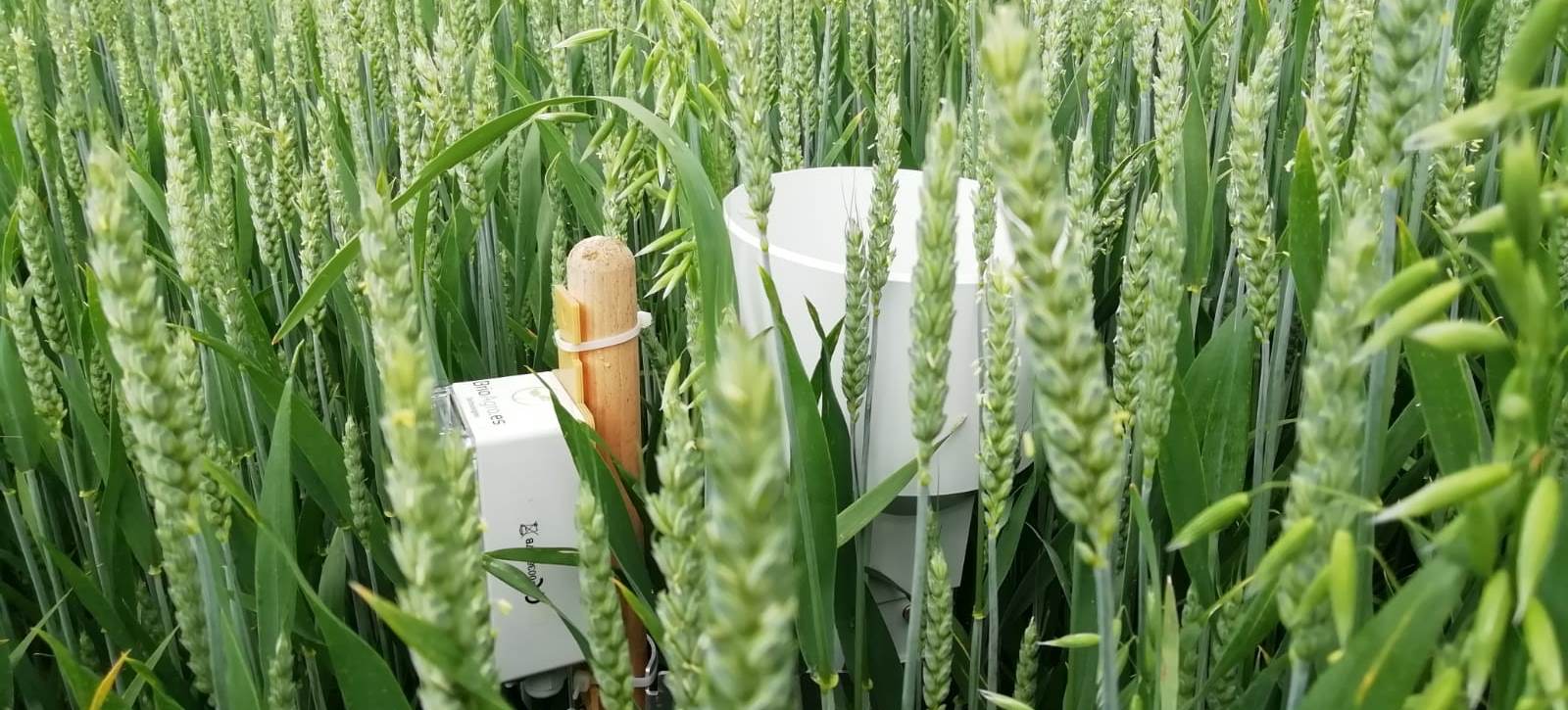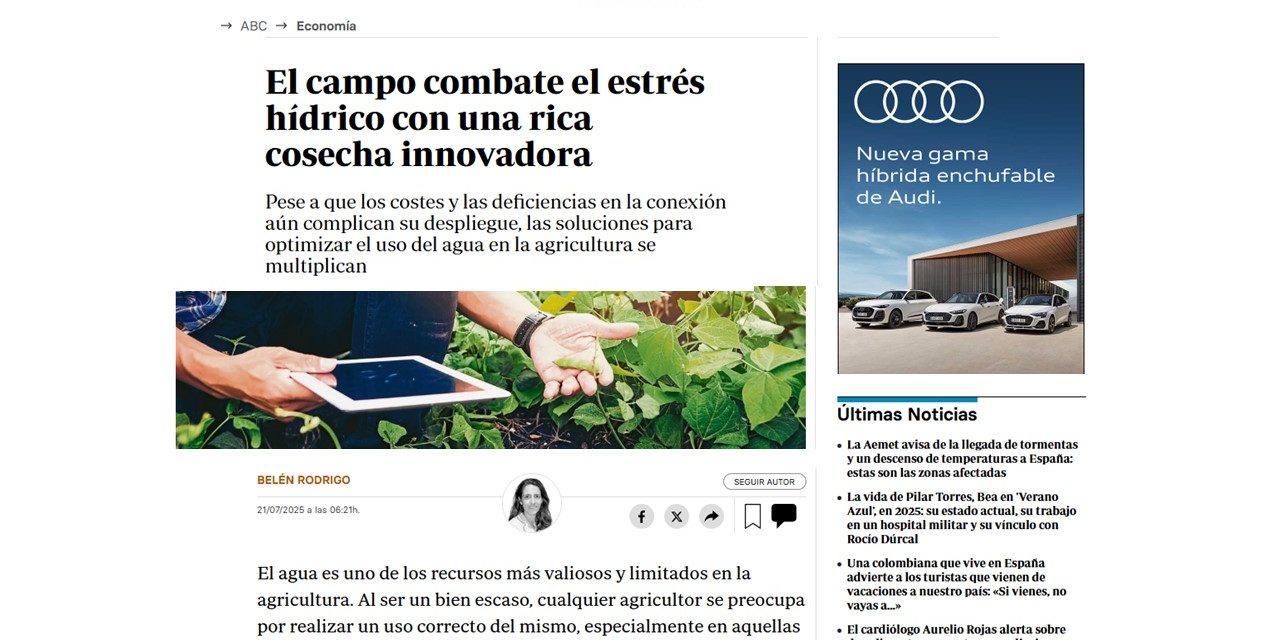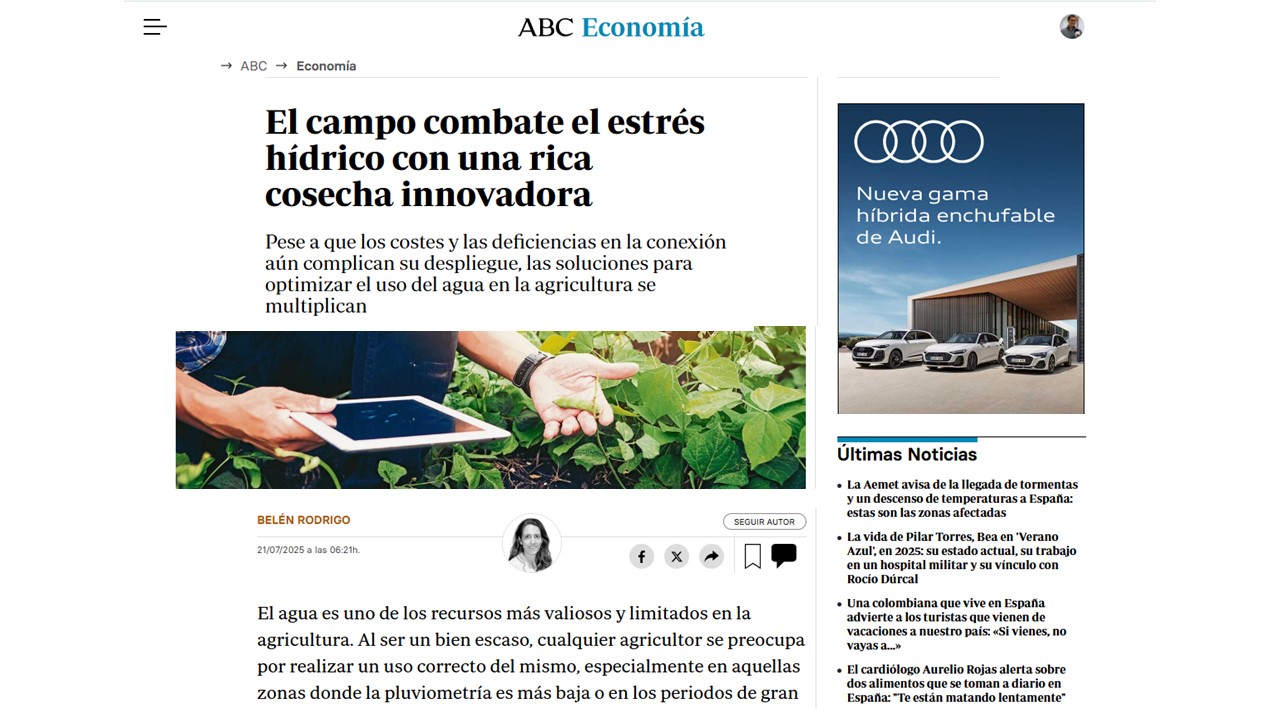Report published in ABC Economía on 21/07/2025, under the title:
“The countryside tackles water stress with an innovative and rich harvest“
In it, the following experts share their views: José Luis Bustos, director of BrioAgro; Manuel Hernández, manager of Maher Electrónica; José Ugarrio, technician at Asaja; and Francisco Sánchez Millán, industrial engineer from UPCT and collaborator at CEBAS-CSIC.
Water is one of the most valuable and limited resources in agriculture. Being scarce, any farmer is concerned about using it efficiently, especially in areas with low rainfall or during periods of severe water stress. With the arrival of technology, the use of smart irrigation has expanded to optimize water and energy consumption in crop irrigation.
Interview with BrioAgro to understand the BrioAgro Aqua Smart Irrigation System
Many companies dedicated to developing smart irrigation systems have been continuously improving their technologies, offering farmers increasingly comprehensive tools. BrioAgro launched the AQUA system as an evolution of the BrioAgro ViTA sensors, which monitor the vital signs of crop development. “This system provides the necessary information to irrigate precisely when the crop needs it,” explains José Luis Bustos, co-founder of BrioAgro. Based on agronomic principles and supported by innovative technology, “an agronomic interpretation of the data is carried out to show the farmer the exact moment to irrigate,” he adds. Once it is known when and how much to irrigate, AQUA, the irrigation actuator, comes into play to execute irrigation at the precise moment.

BrioAgro uses advanced sensors, the Internet of Things (IoT), cloud computing, algorithms, and artificial intelligence. “Its most distinctive feature is the soil moisture calibration algorithm, which adapts to the type of crop and soil, and is continuously improved through artificial intelligence,” Bustos highlights. It also uses geolocated weather data and multispectral satellite imagery.
José Luis Bustos, co-founder of BrioAgro, points out that climate change constantly disrupts usual weather patterns: heatwaves, extreme cold, or heavy rainfall require near real-time decision-making. That’s why the solutions developed by the company allow irrigation to be applied exactly when the crop needs it. “Sometimes you need to irrigate more, like on very hot or windy days, and sometimes less, when moisture is retained. This way, irrigation is optimized and crops are protected from extreme conditions,” he emphasizes.
Sensor data is collected every few minutes on the farm. It is not stored on field devices, but sent to the cloud, where it is stored and processed. As the co-founder points out, “afterwards, the farmer can view the interpreted information, adapted to their crop and soil type, which can be accessed via mobile phone or computer.”
All types of crops
This system is mostly used in irrigated crops — in all kinds. “We have experience with more than 60 crop families, practically all: vegetables, woody plants, fruit trees, cereals, legumes, aromatic herbs, tropical crops, nurseries, industrial and animal feed crops… in open fields and greenhouses,” Bustos clarifies. They are also currently using monitoring points in dryland cooperatives to provide farmers with climate and soil data, right at the root zone. Water savings, fertilizers, crop protection products, labor for irrigation, and energy are the key benefits for farmers. In addition, “energy savings are linear: if you save 30% water, you also reduce the pumping energy bill by 30%.”

They assure that this system does not require a large investment, as “you can start from €1,500 — an investment that pays off in just a few months. From there, you can expand functionality toward intelligent fertigation (the highest functionality of the AQUA system), or add more soil, climate, or crop sensors,” the partners emphasize.




1 Comment